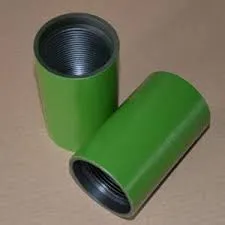- Afrikaans
- Albanian
- Amharic
- Arabic
- Armenian
- Azerbaijani
- Basque
- Belarusian
- Bengali
- Bosnian
- Bulgarian
- Catalan
- Cebuano
- Corsican
- Croatian
- Czech
- Danish
- Dutch
- English
- Esperanto
- Estonian
- Finnish
- French
- Frisian
- Galician
- Georgian
- German
- Greek
- Gujarati
- Haitian Creole
- hausa
- hawaiian
- Hebrew
- Hindi
- Miao
- Hungarian
- Icelandic
- igbo
- Indonesian
- irish
- Italian
- Japanese
- Javanese
- Kannada
- kazakh
- Khmer
- Rwandese
- Korean
- Kurdish
- Kyrgyz
- Lao
- Latin
- Latvian
- Lithuanian
- Luxembourgish
- Macedonian
- Malgashi
- Malay
- Malayalam
- Maltese
- Maori
- Marathi
- Mongolian
- Myanmar
- Nepali
- Norwegian
- Norwegian
- Occitan
- Pashto
- Persian
- Polish
- Portuguese
- Punjabi
- Romanian
- Russian
- Samoan
- Scottish Gaelic
- Serbian
- Sesotho
- Shona
- Sindhi
- Sinhala
- Slovak
- Slovenian
- Somali
- Spanish
- Sundanese
- Swahili
- Swedish
- Tagalog
- Tajik
- Tamil
- Tatar
- Telugu
- Thai
- Turkish
- Turkmen
- Ukrainian
- Urdu
- Uighur
- Uzbek
- Vietnamese
- Welsh
- Bantu
- Yiddish
- Yoruba
- Zulu
Exploring J55 Coupling Applications and Benefits in Oil and Gas Industry
Understanding J55 Couplings A Comprehensive Overview
In the realm of oil and gas, the integrity and reliability of piping systems are paramount. One of the vital components in ensuring these systems function effectively is the coupling. Among the various types of couplings available, the J55 coupling stands out for its specific applications and characteristics.
Understanding J55 Couplings A Comprehensive Overview
The primary function of a coupling in a piping system is to join two pipe ends together. This is crucial for creating long runs of pipe, such as those used in drilling operations. J55 couplings are typically used in configurations that require high tensile strength and resistance to stress, making them ideal for deep wells where the pressure and temperature can significantly vary.
j55 coupling

Manufactured through stringent quality control processes, J55 couplings conform to API (American Petroleum Institute) standards, ensuring their durability and reliability. These couplings are often threaded to facilitate easy installation and disassembly. The threads create a tight seal, which is essential for preventing leaks and maintaining the integrity of the system.
One of the key advantages of J55 couplings is their versatility. They can be employed in various applications, including oil exploration, production, and transportation. Furthermore, J55 is known for its excellent weldability, making it suitable for custom installations where standard sizes may not fit.
However, it's crucial to note that while J55 couplings offer many benefits, they also have limitations. For instance, they may not perform as well under corrosive environments without additional coatings or materials. Therefore, engineers and project managers must carefully assess the operating conditions before selecting J55 couplings for a specific application.
In summary, J55 couplings play a critical role in the efficiency and safety of oil and gas operations. Their strong mechanical properties and compliance with industry standards make them a preferred choice for many projects. As technology advances and the energy sector evolves, the demand for reliable couplings like J55 continues to grow, reflecting the importance of high-quality materials in optimizing production and reducing operational risks. In the ever-changing landscape of the oil and gas industry, understanding the nuances of components like J55 couplings is essential for success.
-
Tubing Pup Joints: Essential Components for Oil and Gas OperationsNewsJul.10,2025
-
Pup Joints: Essential Components for Reliable Drilling OperationsNewsJul.10,2025
-
Pipe Couplings: Connecting Your World EfficientlyNewsJul.10,2025
-
Mastering Oilfield Operations with Quality Tubing and CasingNewsJul.10,2025
-
High-Quality Casing Couplings for Every NeedNewsJul.10,2025
-
Boost Your Drilling Efficiency with Premium Crossover Tools & Seating NipplesNewsJul.10,2025







